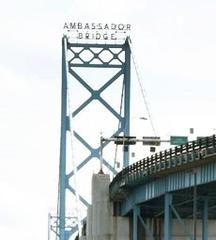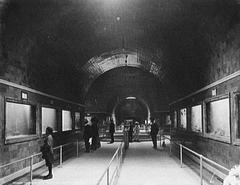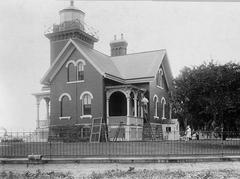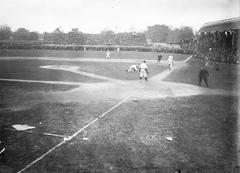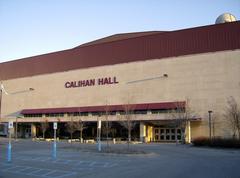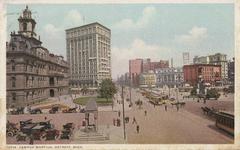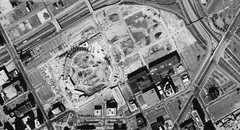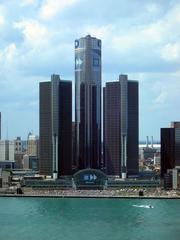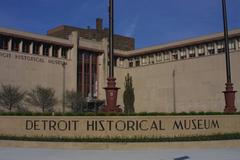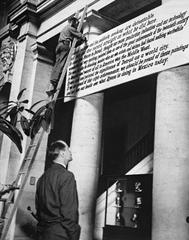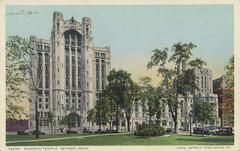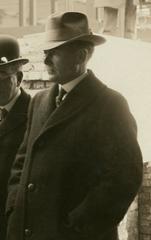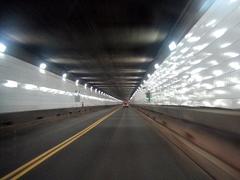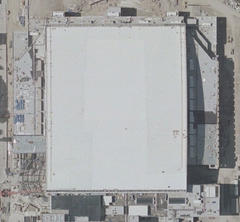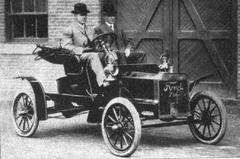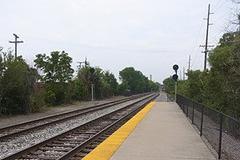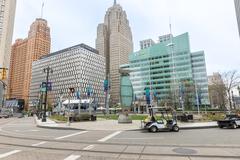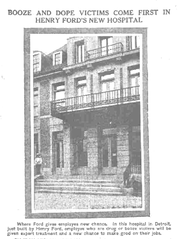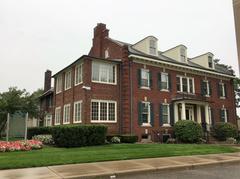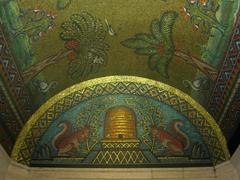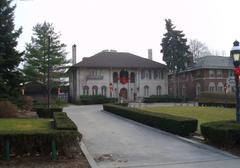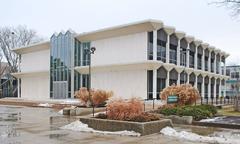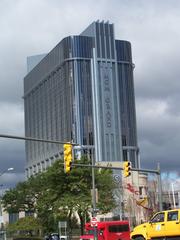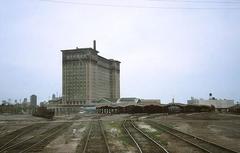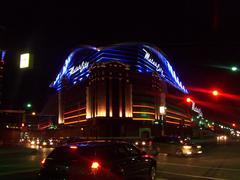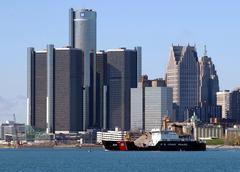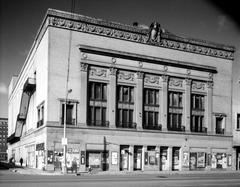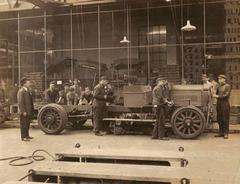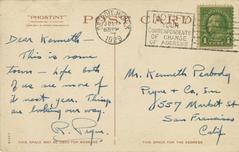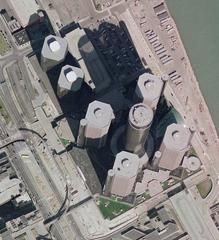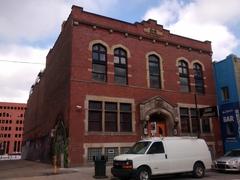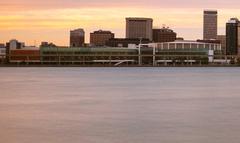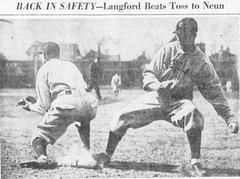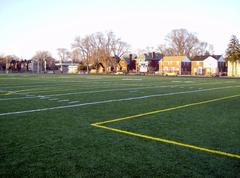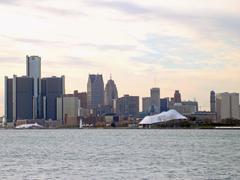
Stuber–Stone Building Detroit: Comprehensive Guide for Visitors
Date: 04/07/2025
Introduction
Situated in Detroit’s vibrant Midtown district, the Stuber–Stone Building—now known as Stuberstone Lofts—stands as a remarkable testament to the city’s industrial past and architectural heritage. Originally constructed in 1916 during Detroit’s automotive boom, this Sullivanesque-style structure has played a vital role in the city’s commercial and cultural evolution. Today, while the building primarily serves as a residential property, its ornate terra cotta façade and historic presence continue to attract architecture enthusiasts and history buffs alike.
This guide provides detailed information on the Stuber–Stone Building, including its historical and architectural significance, practical visitor information such as accessibility, visiting hours, ticketing, nearby attractions, and tips for making the most of your visit. Whether you are passionate about Detroit’s history, planning a cultural outing, or simply curious about the city’s architectural landmarks, this article offers all you need to know to experience the Stuber–Stone Building and its surrounding Midtown neighborhood (Detroit Historical Society, Visit Detroit, Model D Media).
Historical Overview
The Rise of the Stuber–Stone Building
Erected in 1916 by developer David W. Simmons, the Stuber–Stone Building embodies the rapid industrial transformation of Detroit in the early 20th century. As Detroit’s population soared due to the booming automotive sector, the demand for commercial spaces like the Stuber–Stone Building increased. Positioned at 4221–4229 Cass Avenue, the building was strategically located within the city’s economic and cultural core.
Automotive Legacy
Stuber–Stone & Company, which specialized in Columbia Motors and Abbott-Detroit vehicles, was the building’s primary occupant, anchoring its association with Detroit’s automotive history. Other early tenants included the Rotary Tire Service Company and a variety of auto-related businesses, reflecting Detroit’s status as the Motor City.
Evolution and Preservation
The building remained an important commercial hub throughout the mid-20th century, housing dealerships and automotive supply companies. Like much of Detroit, it faced decline during periods of economic hardship but was recognized for its architectural and historical value, earning a place on the National Register of Historic Places in 1996. Its subsequent adaptive reuse as Stuberstone Lofts in the late 1990s preserved its key architectural elements while converting the interior into modern residential units (Detroit City Report).
Architectural Significance
Sullivanesque Style and Features
The Stuber–Stone Building is a noteworthy example of Sullivanesque architecture, inspired by the designs of Louis Sullivan. Key features include:
- Terra Cotta Façade: Intricate decorative terra cotta panels and lion figurines atop piers.
- Vertical Emphasis: Two-story brick piers divide the five-bay façade, creating a sense of rhythm and height.
- Arched Entrances: Limestone-trimmed arches, especially prominent at the right entrance.
- Large Storefront Windows: Ample daylight for ground-floor commercial spaces.
The building’s understated yet elegant design complements Detroit’s more monumental structures, providing a glimpse into the city’s everyday commercial architecture and industrial spirit (Middle Journey, Wanderlog).
Adaptive Reuse
Following its restoration, the building’s interior was transformed into 13–14 loft-style residences, retaining industrial features such as exposed brick walls, original hardwood floors, and high ceilings with visible ductwork. This adaptive reuse highlights Detroit’s preservation ethos and commitment to revitalizing historic structures (Model D Media).
Visiting the Stuber–Stone Building
Location and Access
- Address: 4221–4229 Cass Avenue, Detroit, MI, within the Willis-Selden Historic District (Detroit Historical Society)
- Getting There: Easily accessible by car, public transit, or bike. The QLINE streetcar runs along nearby Woodward Avenue. Paid street parking and lots are available.
Visiting Hours and Admission
- Exterior Viewing: The building’s exterior can be viewed at any time from public sidewalks.
- Interior Access: No regular public access to residential areas. Ground-floor retail spaces are generally open Monday–Saturday, 10:00 AM to 6:00 PM (hours may vary by tenant).
- Tickets: No admission fee or tickets required for exterior viewing or retail visits.
Guided Tours and Special Events
- Regular Tours: The building does not offer regular guided tours. However, it is occasionally included in broader city events such as Doors Open Detroit or Detroit Design Month, offering rare interior access.
- How to Join Tours: Check city event calendars, Midtown Detroit, Inc., or local tour operators for upcoming opportunities (Nomadic Matt).
Visitor Experience & Practical Tips
What to See
- Architectural Details: Take time to appreciate the building’s terra cotta ornamentation, limestone arches, and lion figurines.
- Photography: The façade is ideal for architectural photography, especially in early morning or late afternoon light.
Accessibility
- Mobility: Street-level sidewalks and entrances generally accommodate visitors with mobility challenges, though some areas may lack modern accessibility features.
- Facilities: No public restrooms inside; nearby cafés and museums offer facilities.
Safety and Etiquette
- Midtown is considered a safe, walkable neighborhood, but standard urban precautions are advised.
- Respect residents’ privacy—do not enter private areas or photograph interiors without permission.
- Only access interiors during scheduled open houses or special events.
Exploring Midtown: Nearby Attractions
Make your visit to the Stuber–Stone Building part of a broader Midtown or Detroit architecture tour. Notable nearby sites include:
- Detroit Institute of Arts: One of the nation’s leading art museums (Busy Tourist).
- Detroit Historical Museum and Charles H. Wright Museum of African-American History: Rich resources for city history and culture.
- Eastern Market: Lively public market popular on Saturdays.
- Willis-Selden Historic District: Home to additional historic buildings such as the Coronado Apartments and Cass Avenue Methodist Episcopal Church.
Public transit options like the Detroit People Mover and QLINE make it easy to explore the area (Attractions of America).
Frequently Asked Questions (FAQ)
Q: Can I tour the inside of the Stuber–Stone Building?
A: Interior tours are only available during open houses or scheduled city events; otherwise, access is limited to ground-floor retail areas.
Q: Is there an admission fee or ticket required?
A: No tickets are required for exterior viewing or retail spaces.
Q: What are the building’s hours?
A: The exterior is viewable at any time; retail spaces typically open Monday–Saturday, 10:00 AM–6:00 PM.
Q: Is the building accessible for people with disabilities?
A: The exterior and retail spaces are generally accessible, but confirm with specific businesses or event organizers for interior access needs.
Q: Are there guided tours?
A: Not on a regular basis, but special events may include tours. Check event listings and local organizations for updates.
Q: What other attractions should I visit nearby?
A: Detroit Institute of Arts, Eastern Market, Detroit Historical Museum, and other Midtown landmarks.
Tips for an Enjoyable Visit
- Check event and open house calendars for opportunities to access the interior or join guided tours.
- Combine your visit with other Midtown attractions for a full cultural experience.
- Dress for the season—Detroit weather changes dramatically throughout the year (Lonely Planet).
- Plan for meals and restrooms—Midtown offers many dining options, but building facilities are limited.
- Photography: Use natural light for the best exterior shots; always ask before photographing people or inside businesses.
Preservation and Community Impact
The Stuber–Stone Building’s preservation and adaptive reuse as Stuberstone Lofts reflect Detroit’s broader commitment to revitalizing its historic neighborhoods. The project has drawn new residents and businesses, fostering a vibrant community and supporting the city’s ongoing renaissance (USA History Timeline).
Sources and Further Reading
- Visit Detroit
- Middle Journey: Detroit Architectural Examples
- Model D Media: Stuberstone Lofts Profile
- Detroit Historical Society: Willis-Selden Historic District
- Detroit City Report: Stuber–Stone Building Rehabilitation
- Nomadic Matt: Detroit Attractions Guide
- Lonely Planet: Detroit Travel Tips
- Attractions of America: Detroit Top Attractions
- Busy Tourist: Things to Do in Detroit
- USA History Timeline: Detroit Architecture
- Wanderlog: Detroit Historic Sites
Final Recommendation
The Stuber–Stone Building is a must-see landmark for anyone interested in Detroit’s storied past, architectural diversity, and ongoing renewal. While public interior access is limited, the building’s striking exterior, rich history, and location amid Midtown’s cultural attractions offer a rewarding experience for visitors. For the best experience, plan your visit during city-wide events, take a self-guided architectural walking tour, and explore nearby museums, markets, and restaurants to fully immerse yourself in Detroit’s dynamic heritage.
For updates on open houses, tours, or events, consult local resources, the Audiala app, or Midtown Detroit information platforms. Capture the spirit of Detroit by making the Stuber–Stone Building a highlight of your urban exploration.
Sample alt text for images:
- “Stuber–Stone Building ornate terra cotta façade in Detroit Midtown”
- “Interior view of Stuberstone Lofts with exposed brick and industrial windows”
- “Midtown Detroit streetscape near Stuber–Stone Building”

